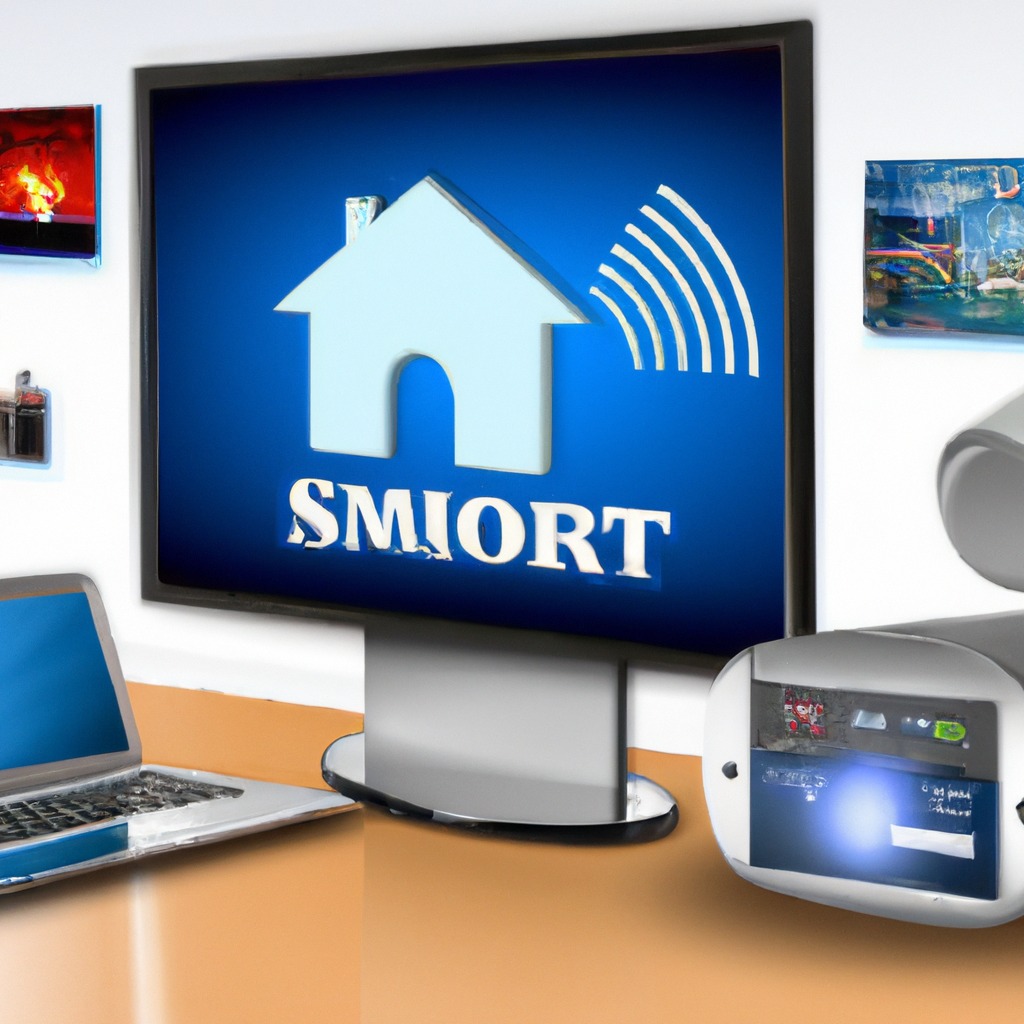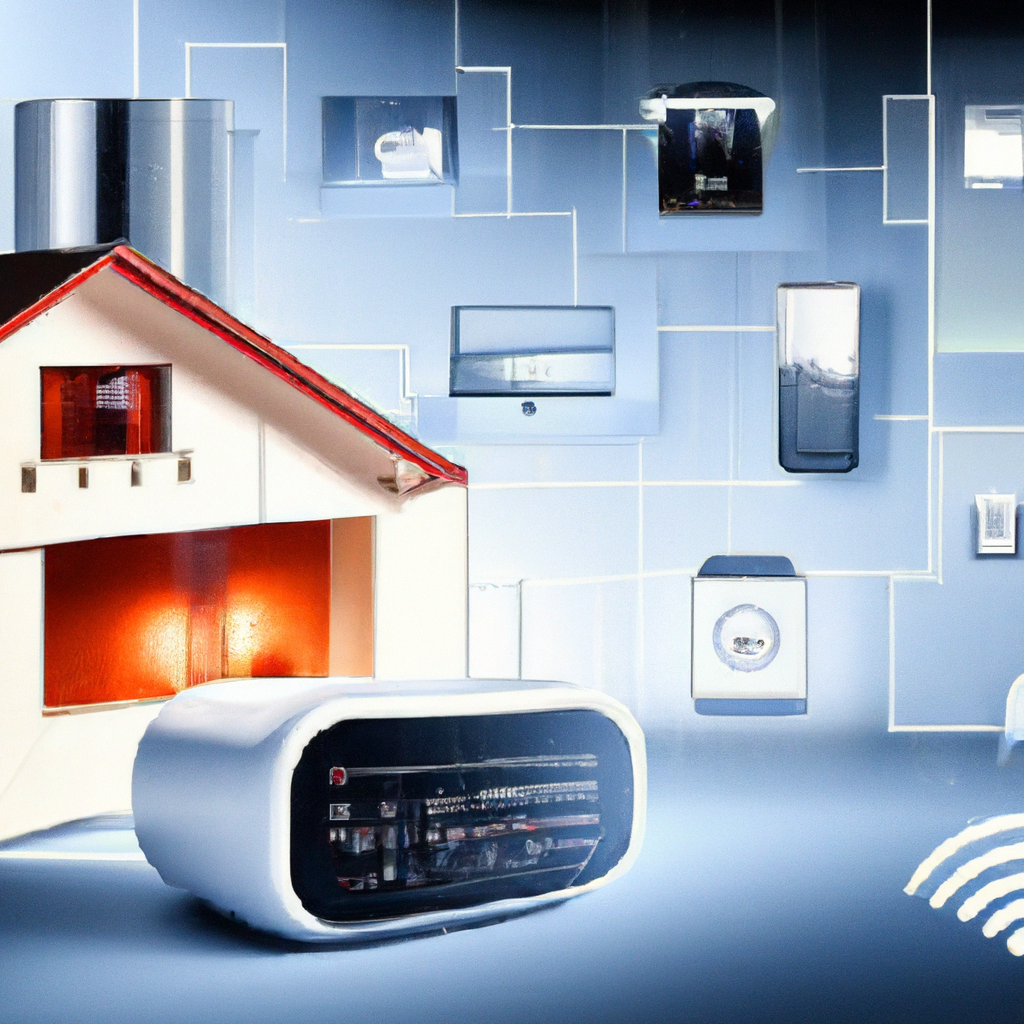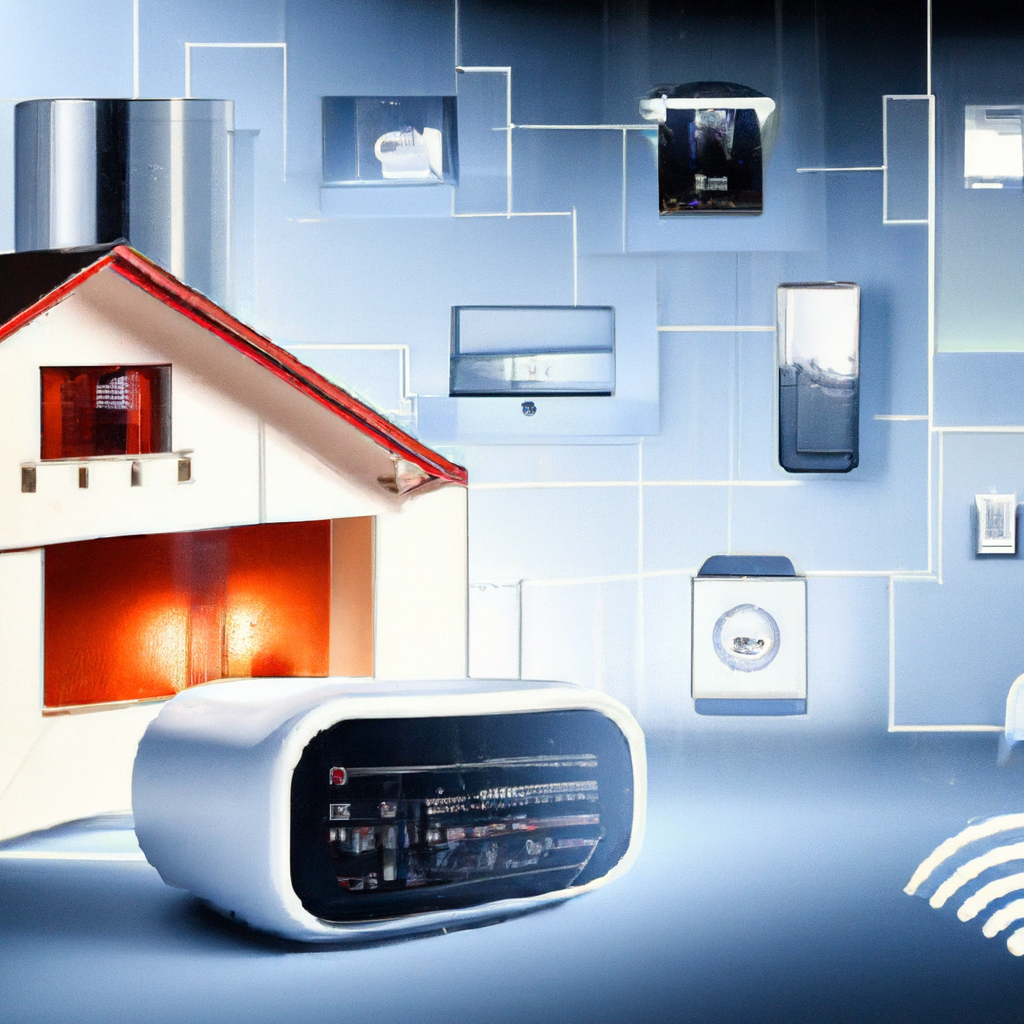Imagine a world where your smart home entertainment system seamlessly connects and interacts with all your other smart devices. Picture a scenario where you can use your voice to control your lights, locks, and even your thermostat, all while enjoying your favorite movie or TV show. Well, the exciting news is that this futuristic dream is becoming a reality. Smart home entertainment systems are not only transforming the way we experience entertainment, but they are also paving the way for a fully interconnected home, where all our devices work together in perfect harmony. In this article, we will explore the possibilities of integrating smart home entertainment systems with other smart devices and how this can revolutionize our daily lives. Yes, they can! Integrating smart home entertainment systems with other smart devices offers a wide range of benefits and enhances the overall functionality of your smart home. From enhanced control and convenience to improved energy efficiency, these integrations provide a seamless experience for users. In this article, we will explore the different types of smart home entertainment systems, their role as the backbone of a smart home, compatibility with other devices, integration methods, challenges, future trends, and security and privacy concerns. Additionally, we will highlight popular brands and products that offer seamless integration. So, let’s dive in and discover the world of smart home entertainment systems and their integration possibilities!

Benefits of Integrating Smart Home Entertainment Systems with Other Smart Devices
Enhanced Control and Convenience
Integrating smart home entertainment systems with other smart devices brings enhanced control and convenience to your fingertips. Imagine being able to control your TV, streaming devices, speakers, and gaming consoles from a single interface or even with voice commands. This integration allows you to effortlessly switch between devices, control playback, adjust volume levels, and even search for content using your preferred voice assistant. With a unified control system, you can easily manage all your entertainment devices and enjoy a seamless user experience.
Seamless Integration of Functions
One of the major benefits of integrating smart home entertainment systems with other smart devices is the seamless integration of functions. A smart TV, for example, can be integrated with streaming devices and gaming consoles to provide a unified viewing and gaming experience. This means that you can stream your favorite shows or movies, play games, and switch between different sources without the need for multiple remotes or complicated setups. The integration of functions makes it easier and more convenient to enjoy a variety of entertainment options at your fingertips.
Improved Energy Efficiency
Integrating smart home entertainment systems with other smart devices can also lead to improved energy efficiency. Many smart TVs, streaming devices, and gaming consoles offer energy-saving features that can be controlled and programmed through your smart home system. For example, you can set your entertainment devices to automatically turn off or enter standby mode when not in use, saving both energy and money. By integrating these devices with other smart devices like lighting systems and smart thermostats, you can create customized automation scenarios that optimize energy consumption and create a more eco-friendly home environment.
Types of Smart Home Entertainment Systems
Smart TVs
Smart TVs are a staple of modern home entertainment, offering a range of features beyond traditional television viewing. These advanced televisions are equipped with built-in internet connectivity, allowing you to access streaming services, browse the web, and even play games directly on your TV screen. Smart TVs often come with pre-installed apps or app stores where you can download your favorite streaming apps like Netflix, Hulu, and Amazon Prime Video. With their advanced features and connectivity options, smart TVs serve as an ideal starting point for integrating entertainment systems with other smart devices.
Streaming Devices
Streaming devices such as Roku, Apple TV, and Amazon Fire TV are popular additions to smart home entertainment systems. These compact devices connect to your TV’s HDMI port and provide access to a wide range of streaming services, including movies, TV shows, music, and even live sports. By integrating streaming devices with other smart devices, you can control your streaming experience with voice commands or through a unified control system. This integration allows for a seamless streaming experience across different devices and creates a cohesive entertainment ecosystem within your smart home.
Smart Speakers
Smart speakers have gained significant popularity in recent years, thanks to their voice assistant capabilities and ability to seamlessly integrate with other smart devices. Devices like Amazon Alexa-enabled Echo speakers and Google Assistant-enabled Nest speakers provide hands-free control over your smart home entertainment systems. You can use voice commands to play music, control playback on your TV or streaming devices, adjust volume levels, and even search for content across different platforms. An integrated smart speaker can serve as a central hub for controlling your entertainment systems, giving you a convenient and interactive way to enjoy your favorite media.
Gaming Consoles
Gaming consoles like the PlayStation and Xbox have evolved into multimedia powerhouses, offering a wide range of entertainment options beyond gaming. These consoles can stream movies and TV shows, play music, access streaming services, and even browse the internet. By integrating gaming consoles with other smart devices, you can create a unified entertainment experience that allows you to seamlessly switch between gaming, streaming content, and controlling your smart home. Whether you’re playing the latest game or relaxing with your favorite movie, integrating gaming consoles with other smart devices enhances your overall entertainment experience.
Smart Home Entertainment Systems: The Backbone of a Smart Home
Centralized Control Hub
Smart home entertainment systems serve as the backbone of a smart home by providing a centralized control hub for all your entertainment devices. With a centralized control hub, you can easily manage and control various aspects of your entertainment systems, such as switching inputs, adjusting settings, and controlling playback. This eliminates the need for multiple remotes and simplifies the user experience. By integrating your entertainment systems with other smart devices, you can access and control them from a single interface or even through voice commands, bringing convenience and ease of use to your smart home.
Interconnectivity with Other Devices
Integrating smart home entertainment systems with other devices allows for seamless interconnectivity and communication between different devices. For example, you can integrate your smart TV with your smart speakers to control volume levels with voice commands or create a synchronized audio-visual experience. Integrating your entertainment systems with lighting systems allows for synchronized lighting effects that complement your viewing experience. The interconnectivity options are vast, and by integrating different devices, you can create an immersive and synchronized entertainment environment within your smart home.
Smart Home Entertainment Systems: Compatibility with Other Smart Devices
Compatibility with Lighting Systems
Integrating smart home entertainment systems with lighting systems adds a new level of atmosphere and immersion to your entertainment experience. By synchronizing your lighting with your entertainment systems, you can create dynamic lighting effects that enhance your viewing or gaming experience. Imagine the lights dimming automatically when you start a movie or game, or having the lights change colors based on the content you’re watching. Smart home entertainment systems often integrate with popular lighting systems like Philips Hue or LIFX, allowing for seamless compatibility and synchronization.
Integration with Security Systems
Integrating smart home entertainment systems with security systems adds an extra layer of convenience and control to your smart home. By linking your entertainment systems with security cameras and sensors, you can receive notifications and even view live camera feeds on your TV or through a dedicated app. For example, if your security system detects motion outside your home, it can automatically display the camera feed on your smart TV, allowing you to monitor the situation without interrupting your entertainment. This integration enhances your home security and provides peace of mind, knowing that you can keep an eye on important areas of your home while enjoying your favorite entertainment.
Integration with Voice Assistants
Voice assistants like Amazon Alexa and Google Assistant have become an integral part of many smart homes. Integrating your smart home entertainment systems with voice assistants enables hands-free control and adds another layer of convenience to your entertainment experience. With voice commands, you can control playback, search for content, adjust volume levels, and even switch between different sources without the need for a remote or manual interaction. This integration allows you to seamlessly control your entertainment systems using natural language, making it easier and more intuitive to enjoy your favorite media.
Integration with Smart Thermostats
Integrating smart home entertainment systems with smart thermostats offers a unique opportunity to create a personalized and immersive entertainment experience. By linking your entertainment systems with your smart thermostat, you can synchronize environmental factors such as temperature and humidity to enhance your viewing or gaming experience. For example, when you start a movie, the temperature in your viewing room can be automatically adjusted to create a comfortable and cozy atmosphere. This integration adds a new level of immersion and customization to your entertainment systems, making every viewing or gaming session a truly unique experience.

How to Integrate Smart Home Entertainment Systems with Other Smart Devices
Use of Universal Connectivity Standards
Using universal connectivity standards such as HDMI-CEC (Consumer Electronics Control) or HDMI ARC (Audio Return Channel) can simplify the integration of smart home entertainment systems with other smart devices. HDMI-CEC allows for control of multiple devices connected via HDMI with a single remote control, while HDMI ARC simplifies the audio connection between your TV and audio devices. By utilizing these standards, you can achieve seamless integration and control over your entertainment systems without the need for additional setup or configuration.
Utilize Smart Home Hubs
Smart home hubs act as a central control point for all your smart devices, including your entertainment systems. These hubs offer compatibility with different protocols and allow for seamless integration and control of various devices. By connecting your entertainment systems to a smart home hub, you can create automation scenarios and control them through a single interface or even using voice commands. Smart home hubs often come with dedicated mobile apps that provide intuitive control over your entertainment systems and other connected devices, making integration a breeze.
App-Based Integration
Many smart home entertainment systems and devices come with dedicated mobile apps that offer integration and control options. These apps allow you to control your entertainment systems, adjust settings, and even create automation scenarios. By installing the respective apps on your smartphone or tablet, you can seamlessly integrate your entertainment systems with other smart devices. For example, you can use a dedicated app to control your smart TV, streaming devices, and speakers, and create personalized scenes that enhance your entertainment experience. App-based integration offers a user-friendly and intuitive way to integrate and control your smart home entertainment systems with other devices.
Challenges in Integrating Smart Home Entertainment Systems with Other Smart Devices
Compatibility Issues
One of the major challenges in integrating smart home entertainment systems with other devices is compatibility. Not all devices use the same protocols or standards, which can make integration difficult or even impossible. For example, if your smart TV uses a different connectivity standard than your smart speakers or streaming devices, you may face compatibility issues that hinder seamless integration. It is essential to research and ensure compatibility between your devices or look for workarounds, such as using universal connectivity standards or utilizing smart home hubs that offer compatibility with multiple devices.
Complex Setup and Configuration
Integrating smart home entertainment systems with other devices often requires a certain level of technical knowledge and understanding. Configuring different devices, setting up communication protocols, and managing automation scenarios can be complex and time-consuming. The setup and configuration process may involve navigating through multiple menus, adjusting settings, and troubleshooting compatibility issues. However, with the advancements in technology and user-friendly setup processes, many manufacturers strive to simplify the integration process and provide user-friendly tools and interfaces to make setup and configuration as smooth as possible.
Cost of Integration
Integrating smart home entertainment systems with other devices can come with a significant cost. Depending on the devices you own and the level of integration you desire, you may need to invest in additional equipment, such as smart home hubs, compatible devices, or professional installation services. It’s important to consider your budget and prioritize the integration options that align with your needs and preferences. While the initial investment in integration may seem high, the benefits and convenience that come with a fully integrated smart home entertainment system can outweigh the cost in the long run.

Future Trends in Integrating Smart Home Entertainment Systems with Other Smart Devices
Increased Interconnectivity
As technology continues to advance, we can expect increased interconnectivity between smart home entertainment systems and other devices. The integration possibilities will expand, allowing for more seamless communication and interaction between different devices. We may see advancements in universal connectivity standards, making integration even easier for consumers. Additionally, the emergence of IoT (Internet of Things) platforms and ecosystems will create new opportunities for interconnected devices and enhanced user experiences.
Advanced Automation Features
The future of integrating smart home entertainment systems with other devices will likely bring advanced automation features. With advancements in artificial intelligence and machine learning, devices will become more intelligent and adaptive, learning user preferences and automatically adjusting settings to create personalized entertainment experiences. For example, your smart TV could learn your favorite genres and recommend new shows or movies based on your viewing history. Automation features will simplify the user experience and make enjoying entertainment in a smart home more intuitive and tailored to individual preferences.
Integration with Artificial Intelligence
The integration of smart home entertainment systems with artificial intelligence (AI) will revolutionize the way we interact with our devices. AI-powered voice assistants will become more sophisticated, offering natural language processing and contextual understanding, making interactions more conversational and intuitive. AI algorithms will improve content recommendations, personalized settings, and automation scenarios, creating a truly smart and adaptive entertainment experience. The integration with AI will enhance usability, convenience, and personalization, taking smart home entertainment systems to new heights.
Security and Privacy Concerns in Integrating Smart Home Entertainment Systems with Other Smart Devices
Data Privacy Risks
Integrating smart home entertainment systems with other devices can raise concerns about data privacy. As these devices collect and process data to provide personalized experiences, there is a risk of sensitive information being compromised. It is essential to ensure that all connected devices have proper security measures in place, such as encryption and user authentication. Additionally, regularly updating firmware and using strong passwords can help mitigate data privacy risks. As a user, it is important to be aware of the data collected by your devices and choose solutions from reputable manufacturers who prioritize privacy and security.
Cybersecurity Vulnerabilities
Integrating smart home entertainment systems with other devices can increase the potential attack surface for cybersecurity threats. A vulnerable device can serve as an entry point for hackers to gain access to your network and other connected devices. It is vital to keep all devices and firmware up to date with the latest security patches and to follow best practices for home network security, such as using strong passwords and securing your Wi-Fi network. Choosing devices from trusted manufacturers who prioritize security and regularly release software updates is a crucial step in ensuring the safety and cybersecurity of your smart home.

Popular Brands and Products for Integration
Brands Offering Seamless Integration
Many popular brands in the smart home industry offer seamless integration options for their entertainment systems and other smart devices. Brands like Samsung, LG, Sony, and Philips are known for their smart TVs that can integrate with a variety of streaming devices, speakers, and smart home hubs. Streaming devices like Roku, Amazon Fire TV, and Apple TV offer extensive compatibility with different smart devices. Smart speakers from Amazon (Echo) and Google (Nest) provide seamless integration with entertainment systems using their voice assistant capabilities. When considering integration, it’s worth researching the compatibility and features offered by different brands to find the right fit for your smart home.
Notable Smart Home Entertainment and Device Integration Products
Some notable products that offer seamless integration include the Samsung QLED TVs, which feature built-in smart capabilities and compatibility with various streaming platforms and smart home hubs. Apple TV is known for its integration with other Apple devices and the Apple ecosystem, providing a seamless entertainment experience for Apple users. Amazon Echo devices with Alexa integration allow for voice-controlled entertainment systems and compatibility with a wide range of streaming devices, speakers, and smart home devices. Ultimately, the choice of products will depend on personal preferences, budget, and the desired level of integration within your smart home.
Conclusion
Integrating smart home entertainment systems with other smart devices brings a multitude of benefits, from enhanced control and convenience to improved energy efficiency. The seamless integration of functions and compatibility with other smart devices allow for a cohesive and personalized entertainment experience. While challenges like compatibility issues, complex setup and configuration, and cost may arise, advancements in technology and user-friendly tools simplify the integration process. As the future unfolds, increased interconnectivity, advanced automation features, and integration with artificial intelligence will shape the way we experience entertainment in our smart homes. However, it’s crucial to be aware of security and privacy concerns and choose reputable brands and devices that prioritize user safety. With a wide range of popular brands and products offering seamless integration, there is no shortage of options to create a fully integrated and immersive smart home entertainment system. So, embrace the possibilities, customize your entertainment experience, and enjoy the benefits of integrating your smart home entertainment systems with other smart devices.











